Reviewers' Choice: 14 Favorites of 2016

Ordinarily, Foreword Reviews is all about indie authors and their books. Well, that’s still what we’re all about, but just this once, we’re also making it about our reviewers. We have about 150 of them scattered across the United States and around the world. They are librarians, booksellers, educators, authors, journalists, all united in their love of books. We asked them to pick the best books they reviewed for us in 2016 and tell us why they’re the favorites. So, below, we spotlight great books … and great reviewers, too.
Unpleasantries: Considerations of Difficult Questions, by Frank Soos. Soos is a self-proclaimed messy guy, who roams through the essay genre to share off-beat and poignant tales about his life and those who contributed to it. Essays careen from his childhood in small town Virginia to those about his years as an academic and nature lover in Alaska. Nothing cut and dry here, but readers will enjoy rooting around Soos’s life to find bits and pieces of their own. —Karl Helicher
Unpleasantries
Considerations of Difficult Questions
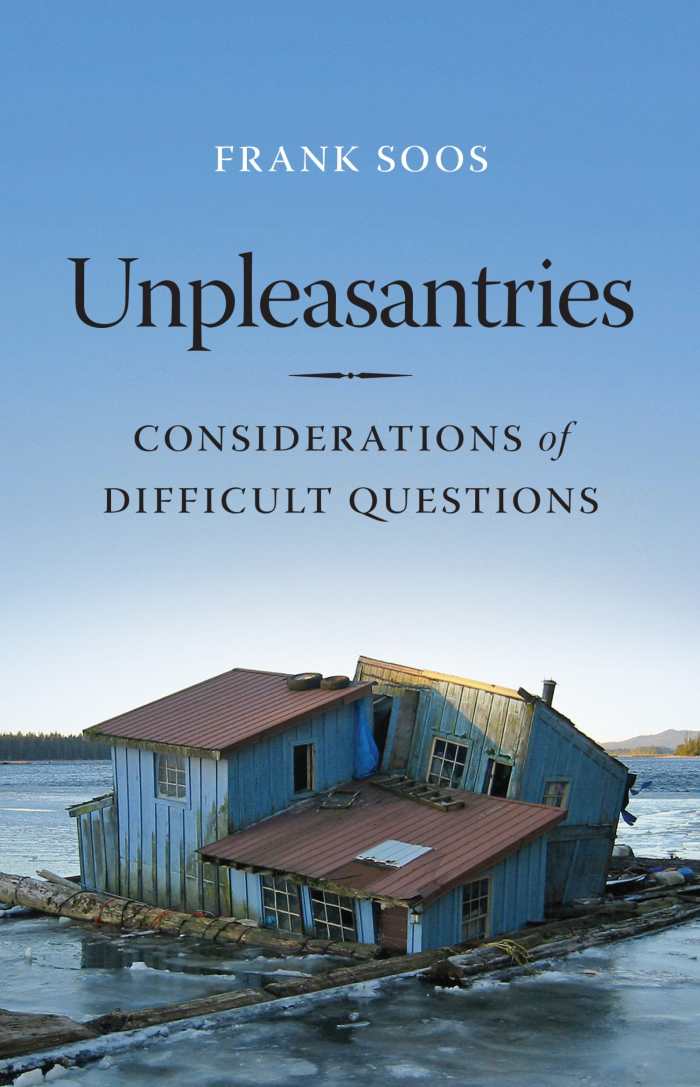
Frank Soos
University of Washington Press
Hardcover $28.95 (207pp)
978-0-295-99840-4
Buy: Local Bookstore (Bookshop)
Frank Soos points his lance at the windmills of the human condition and offers some solace.
In Unpleasantries, Frank Soos presents a self-consciously messy collection of essays—essays being, he says, a naturally messy form of writing. These works are enjoyable, are worth pondering, and invite head-scratching responses.
Like his essays, Soos acknowledges that he is a “messy guy.” Through this literary form, he finds himself able to explore his life, and his relationships with people and animals, comfortably. The text declares that Soos has lived a good life, though its events are related through dark essays in which painful lessons are often the best way to learn.
The text revels in its chaotic medium, characterized by a nonlinear style and a resistance to closure. Readers used to reading neatly tied-up endings won’t necessarily find them here—which is not to say that they’ll be disappointed by what does arise.
These essays careen from one story to another, as with a jokester who says, “Hey, have you heard this one?” then interrupts his own story to go off on some tangent. Indeed, one essay is built around a racially tinged joke and a second raunchy one, both told by his uncles. These stories are springboards for anecdotes of the author’s childhood in Pocahontas, Virginia, a small, decaying coal-mining hamlet, and relate how African Americans were tolerated but not accepted, while also describing the misogynistic social rules that governed women’s lives. Once readers adjust to abrupt shifts between locales or topics, they can become engaged in the essays and may likely relate to the experiences Soos shares.
Essays juxtapose Soos’s rural Virginia childhood with his years in Alaska, where he encounters deaths—one nearly being his own—divorce, and the natural beauty and ruggedness that appeal to his loner side. Death, especially, is a prominent theme throughout, including that of his father, a young uncle, a former student, and a fellow teacher (who was the son of Sylvia Plath and Ted Hughes). Soos and readers his age likely spend an increasing amount of time pondering death. These essays challenge the reader to accept its inevitability of as part of life.
The author’s writing, like that of his inspirations Alice Munro and Michel de Montaigne, flows gracefully and clearly. He points his lance at the windmills of the human condition and offers some solace for those coming to terms with age, loss, the past, and the future.
KARL HELICHER (May 27, 2016)
God Almighty Hisself: The Life and Legacy of Dick Allen, by Mitchell Nathanson. During the 1960s and 1970s, Dick Allen was baseball’s most controversial—and one of its best—players, one that “God almighty hisself” could not reign in. Nathanson, a law professor, counters that Allen would have been a shoe-in for the Hall of Fame if he had played twenty years later. Instead, as the author vividly shows, Allen spent as much time battling racism and the pre-free agency indentured servant relationship between players and owners as he did rattling opposing pitchers. —Karl Helicher
God Almighty Hisself
The Life and Legacy of Dick Allen
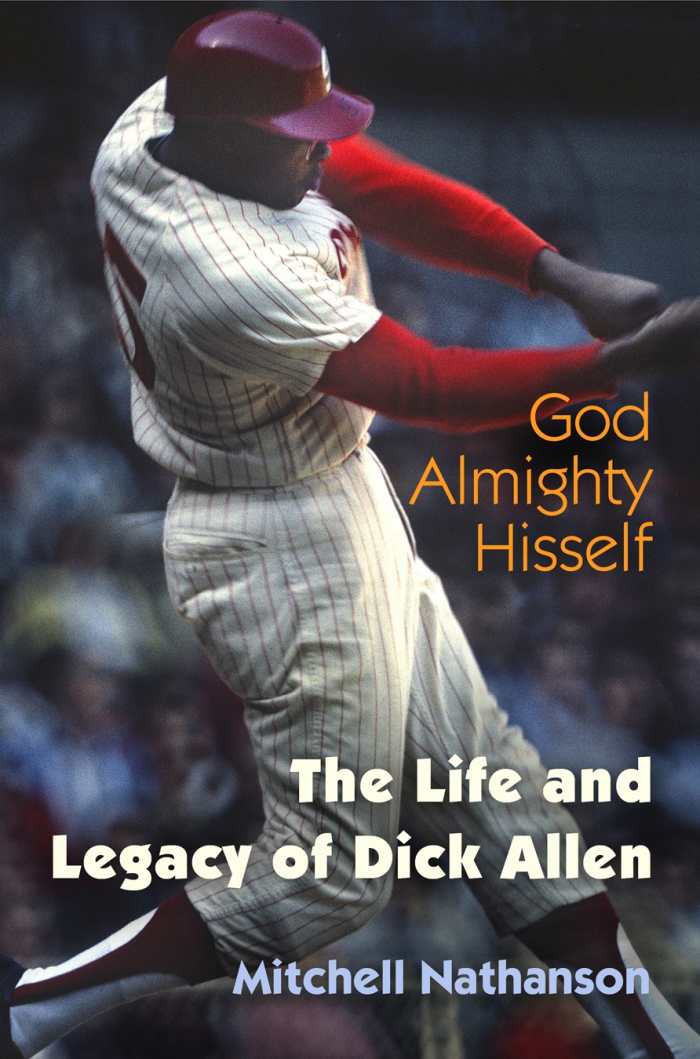
Mitchell Nathanson
University of Pennsylvania Press
Hardcover $34.95 (416pp)
978-0-8122-4801-2
Buy: Local Bookstore (Bookshop)
This significant work clarifies the challenges that black players encountered during the pre-free agent era.
Mitchell Nathanson hits a four-bagger with this richly researched biography of baseball legend Dick Allen that reveals the player’s complexities in the context of the racial discrimination of his era, incorporating factors like the club owners’ control over the game and its players.
Allen was one of the best and most controversial baseball players of the 1960s and 1970s. Indeed, George Myatt, a frustrated Philadelphia Phillies manager, complained that “God Hisself” could not control Allen. Mitchell Nathanson, professor of law at Villanova University and the author of four previous books on baseball, shows that Allen’s actions came more from his rebellion against the “plantation mentality” of baseball than from a lack of divine intervention.
Allen played for five teams during his controversial fifteen-year career. He demanded high salaries and received them, becoming, at the time, the highest-paid player in both Phillies and White Sox history. He backed up his demands with impressive statistics—the 1964 National League Rookie of the Year, the 1972 American League MVP, 351 career home runs, and a .292 lifetime batting average.
Robert and Ruly Carpenter, the Phillies owners, were indifferent to their African American players, though, and the fans were worse. After a hellish 1963 season in Jim Crow Arkansas with the Phillies AAA affiliate, Allen suffered racial taunts and had to dodge smoke bombs and bottles hurled at him during games. He, like all “second generation” (those who followed Jackie Robinson) African American players, was also paid less initially and had fewer endorsement opportunities than white players, and he was bound to his team by a reserve clause.
Nathanson concludes his biography by positing that Allen would have been a revered member of the Hall of Fame had he played twenty years later. This significant work clarifies the challenges that black players encountered during the pre-free agent era, and shows how Dick Allen fought the system for his rights as a player and a man.
KARL HELICHER (May 27, 2016)
Seeing Red, by Lina Meruane. I was 
Rachel Jagareski
quite taken with Lina Meruane’s Seeing Red, in a new translation by Megan McDowell. The writing is a dynamic blend of imagery, wrestling with (largely unwanted) personal change, poetry, flashes of humor, rage, anxiety, and other emotions. Not a relaxing book to navigate but a challenging one and utterly absorbing. Nominated for Least Likely to Appear on my Bedside Table (too stimulating before sleep!). —Rachel Jagareski
Seeing Red
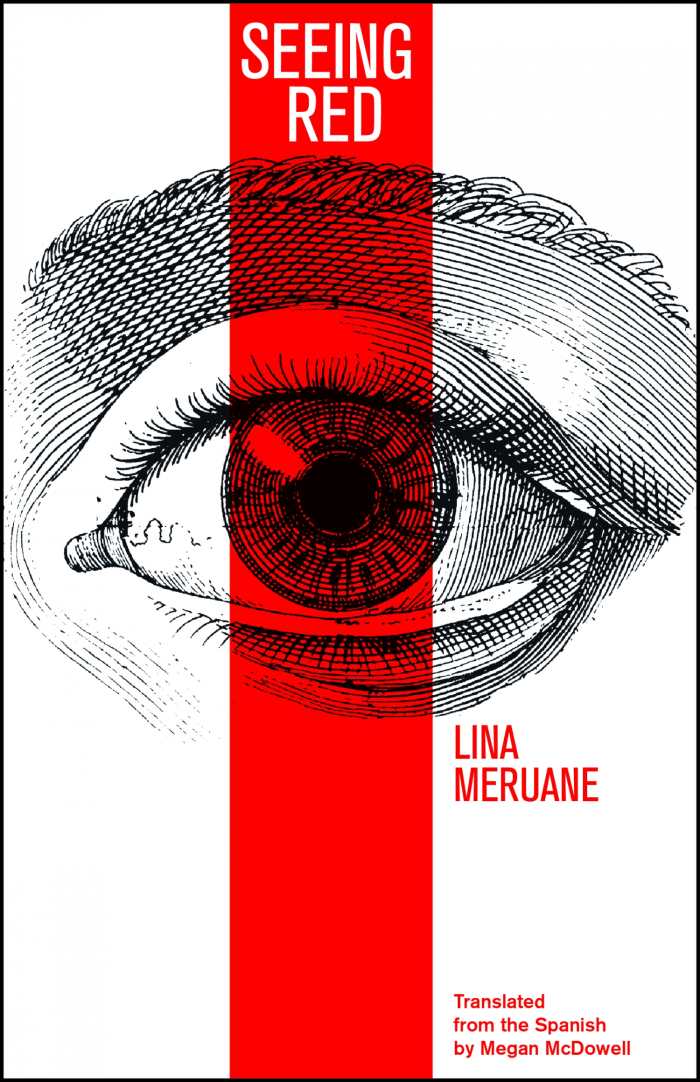
Lina Meruane
Megan McDowell, translator
Deep Vellum
Softcover $14.95 (170pp)
978-1-941920-24-4
Buy: Local Bookstore (Bookshop)
A young woman may go blind, in this novel with a bristling, staccato torrent of vivid imagery from an acclaimed Chilean author.
Seeing Red, by Lina Meruane, dramatically introduces English-language readers to the acclaimed Chilean author.
The novel is based on Meruane’s experiences with diabetes-induced blindness. The main character shares her name and is also a graduate student recently arrived in New York City. The story plunges right to the action: Lina is at a party, and ruptured blood vessels flood one eye. Soon, another stroke dims her remaining eye, and she reckons with the possibility of permanent blindness and increased dependence on others. While Lina’s eyes heal, she awaits an operation to hopefully reclaim her vision, and she describes the upheaval in her relationships with her boyfriend and parents.
The writing is jagged, sharp, and direct, serving as a counterpoint to the careful movements and stillness prescribed for our heroine. Short chapters of dense blocks of text shape the novel into a bristling, staccato torrent of vivid imagery and psychological roilings. Meruane shares the most intimate, intense details of her harrowing story through her narrative, building tension towards the climax of her surgery.
Much of this slim novel can be read in metaphorical terms. Heightened awareness of Lina’s other senses and reevaluation of her life come when her visual faculties are ebbing. There are also numerous optical analogies. Her surgeon’s irritatingly pompous secretary, Doris, “spokeswoman of terror that she was,” opines that patients bear some blame for their ocular complaints, since “the retina [is] our life record, the mirror of our unfortunate acts, a perfectly polished surface that we spend our existence ruining.”
Lina’s chronicle is simultaneously disturbing and lyrical. When she travels home and hears a fellow passenger speak with a Chilean accent, it evokes a sensual encapsulation of her native land: “the glacial poems of the mountain peaks and their snows in eternal mid-thaw, the dark whisper of the south dotted with giant rhubarbs, the wail of roadside shrines, the herb-garden smell, the rough salts of the desert, the sulphurous copper shell open to the sky.”
Translator Megan McDowell has an excellent ear for Meruane’s prose and skillfully exposes its darkly humorous veins. Seeing Red is a captivating, multilayered debut from a strong young writer. Hopefully, more translations of her work will soon follow.
RACHEL JAGARESKI (February 29, 2016)
The Edge of Everything, by 
Kelly Thunstrom
Jeff Giles. It’s often difficult to come up with something new in young adult fiction, but Jeff Giles managed to do it. What I most liked about The Edge of Everything was the fact that you found yourself rooting on characters that, at first, you never thought you would be sympathetic toward. It was a very original concept. —Kelly Thunstrom
The Edge of Everything
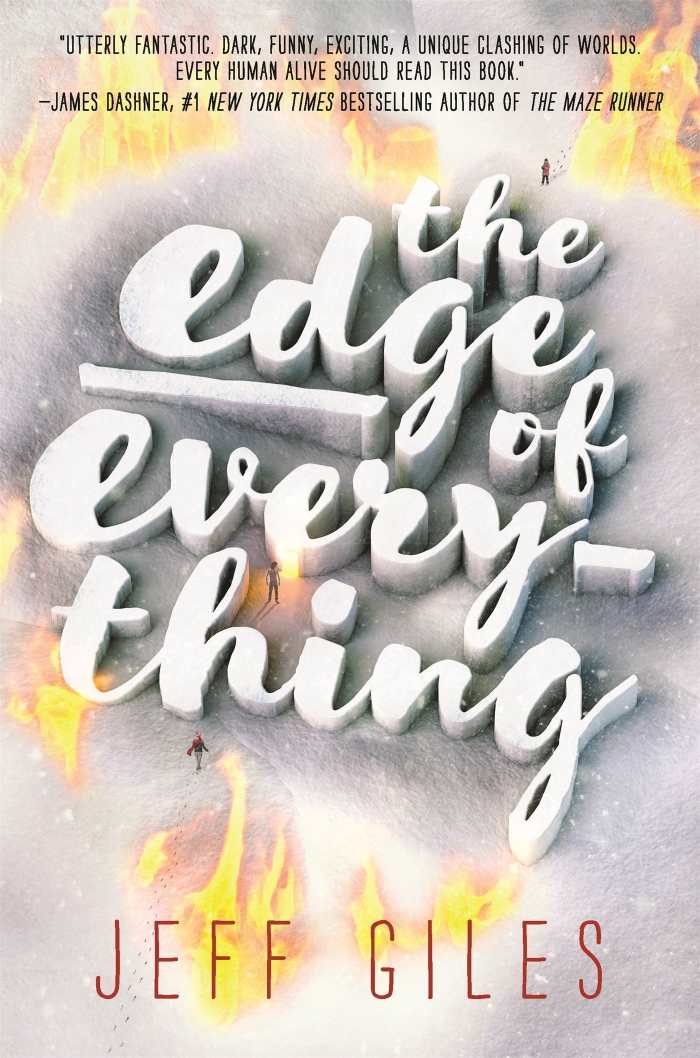
Jeff Giles
Bloomsbury
Hardcover $18.99 (368pp)
978-1-61963-753-5
This is a brilliant and imaginative novel, filled with poignant scenes and sympathetic characters.
Suspense, romance, and supernatural elements come together in Jeff Giles’s The Edge of Everything, a novel that stands out brilliantly and imaginatively in its originality.
The book’s heroine, Zoe, lives in the Montana woods with her mother and little brother, Jonah. The whole family is still reeling over the loss of Zoe’s dad. One night during a terrible blizzard, Zoe’s mother is unable to get home. That same night, Zoe and her brother are attacked in the woods. They are rescued by a bounty hunter, whom Zoe dubs X.
X was born in a type of hell called the Lowlands, and it is his job to go out and grab souls on Earth. He and Zoe fall in love, though their very different origins lead to many difficulties in their relationship. The depth of their separation is deepened through the use of alternate sections in telling their stories.
It is easy to care about all the many characters in this novel, even, even those living in the Lowlands. Giles makes effective use of contemporary humor that is likely to appeal to today’s young readers. Jonah, Zoe, and even the adult characters infuse the plot with funny dialogue that’s completely believable and incorporated well. This comes through particularly in scenes such as when Zoe tries to teach X to speak less formally, and when her mother sits in on Zoe’s police interrogation.
But The Edge of Everything is not all fun and games; there are poignant scenes as well. When the narrative goes into detail about why souls are being sent to the Lowlands, it becomes easy to root for the bounty hunters too. The last few pages don’t wrap everything up with a neat bow, hinting at a possible—and welcome—sequel in which lingering questions may be answered and happy endings may be found.
KELLY THUNSTROM (November 9, 2016)
The Home Place: Memoirs of a Colored Man’s Love Affair with Nature, by J. Drew Lanham. Lanham’s 
Scott Neuffer
memoir continues a rich American tradition of lyrical writing about pastoral environments. As an African-American naturalist, though, Lanham’s able to relate the natural environment and his own land ethic to historical oppression and disenfranchisement of blacks in the United States. By turns beautiful and infuriating, The Home Place is a timely meditation on race relations and points to the good earth as the ultimate source of healing. —Scott Neuffer
The Home Place
Memoirs of a Colored Man’s Love Affair with Nature
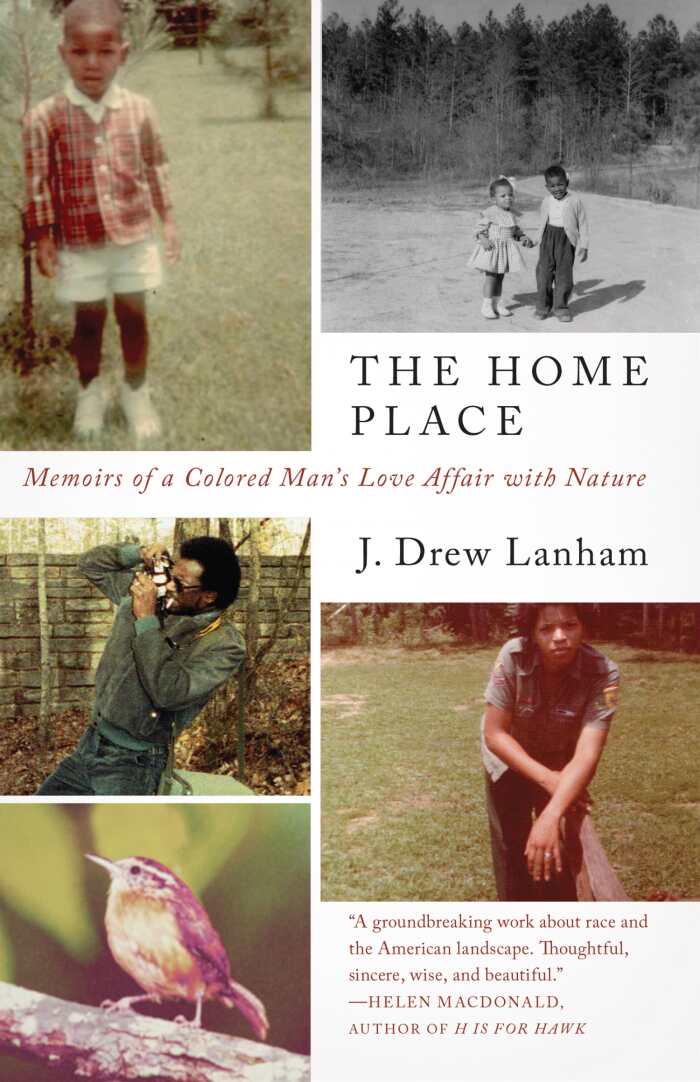
J. Drew Lanham
Milkweed Editions
Hardcover $24.00 (232pp)
978-1-57131-315-7
A deep and abiding connection to the pastures and forests of South Carolina defines J. Drew Lanham’s remarkable, boundary-breaking memoir, The Home Place.
A birder, naturalist, and distinguished professor of wildlife ecology at Clemson University, Lanham recounts his childhood on his family’s pristine multigenerational ranch in Edgefield County, South Carolina. Conservationist greats like Aldo Leopold become his heroes and inspire in him a strong land ethic and sense of place. The flora and fauna of the ranch take shape in his young mind and provide self-identity and emotional harmony.
That Lanham is black—in a scientific profession dominated by whites—makes The Home Place uniquely American and uniquely Southern. Lanham relays his experiences with extant racism in the South. In one troubling episode, rural white men in a pickup truck aggressively tail Lanham and a female colleague as they study birds in the backcountry. In trying to understand what it means to be a black naturalist in modern-day America, Lanham digs deep into his own genealogy and the legacy of slavery that still haunts southern states, even underlying the very academic institution where he teaches. These reflections on racial injustice invoke indignation as well as yearning for reconciliation.
The Home Place is a work of undeniable poetry. Like John Muir, Aldo Leopold, Rachel Carson, and other trailblazers before him, Lanham writes rapturously of the natural world, of its majesty, sublimity, and wonder. He writes of being “colored” by the fields and the soil and the water, both in spirit and manifested in the beautiful hue of his skin. By helping to define a land ethic in a region where blacks have been historically dispossessed of their land, Lanham has created a book of monumental social, political, and philosophic importance. He shows that the land sustains life, yes, but also how it heals and nurtures our shared humanity.
SCOTT NEUFFER (August 26, 2016)
The Garden Awakening: Designs to Nurture Our Land and Ourselves, by Mary Reynolds. This book 
Sarah White
combines sound gardening advice with more than a bit of mysticism and symbolic planning and encourages gardeners to raise up their plants much like they would raise children. It’s also just a beautiful book, full of lovely drawings and plenty of garden plans to dream over. —Sarah White
The Garden Awakening
Designs to Nurture Our Land and Ourselves
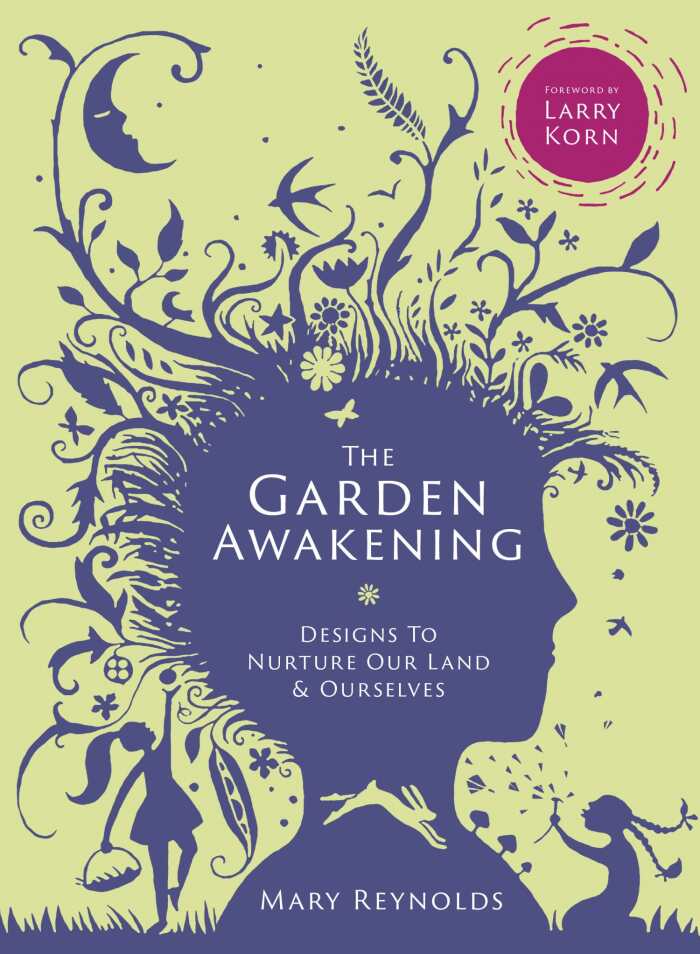
Mary Reynolds
Green Books
Hardcover $29.99 (272pp)
978-0-85784-313-5
Reynolds delivers solid information with a touch of fairy spirit that will come across as charming even to those who don’t lean toward the mystical.
Mary Reynolds’s The Garden Awakening works to show that trying to claim too much of a hold on the land, even with good intentions, can cause trauma; instead, gardeners should be focused on healing. Herself an Irish garden designer who turned away from manicured spaces to create more mystical, wilder, healthier spaces in tune with nature and the spirit, Reynolds uses this book to show how creating a garden is much like raising a child.
The author combines sound gardening advice with a heavy dose of mysticism and spirituality, suggesting the use of sacred symbols and shapes in the garden and asking would-be designers to set an intention in their space and set aside areas for things like wishing, praying, and releasing, as suit the gardener’s needs.
The book is lovely, weighty, and well designed, with whimsical drawings by Ruth Evans, as well as garden plans and depictions of how the gardens look with landscaping and after the planting is complete. While Reynolds clearly believes in the power of symbols and the energy they bring to a space, the book is also a good reference for people who want to create spaces in harmony with nature, even without layers of symbolism.
The author’s focus is on developing what she calls forest gardens, built layer on layer with trees, shrubs, herbaceous plants, ground cover, underground plants, and vines. The intent is to bring fertility to the land and to produce food in a natural space. Many pages of tables offer suggested plants for each layer and describe the plant’s characteristics and where they grow best.
Reynolds delivers solid information with a touch of fairy spirit that will come across as charming even to those who don’t lean toward the mystical. The book urges gardeners to find their roots in their land, to remember that the land belongs to nature, and to do all they can to awaken their space and bring health and fertility to the land and to themselves.
SARAH WHITE (July 27, 2016)
Wind Sprints: Shorter Essays, by 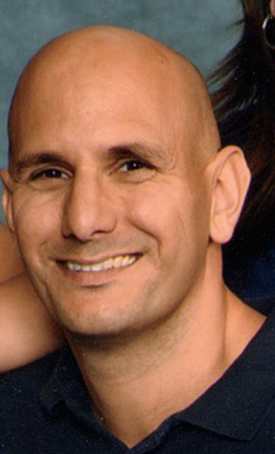
Peter Dabbene
Joseph Epstein. Engaging essays from a master of the form, on a variety of subjects that will keep readers entertained throughout. —Peter Dabbene
Wind Sprints
Shorter Essays
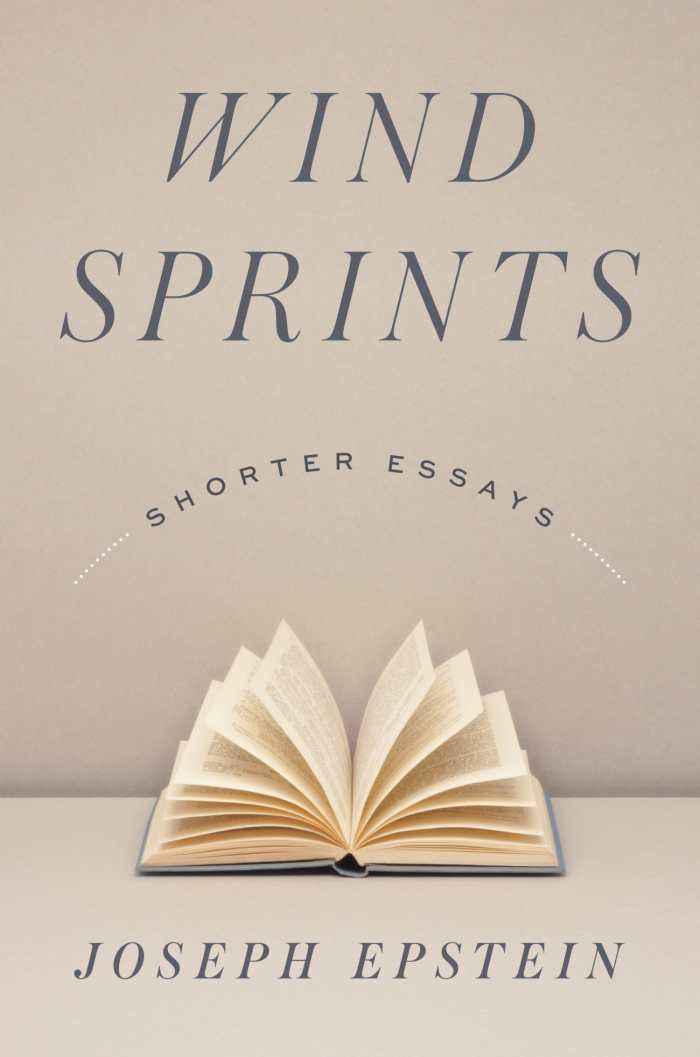
Joseph Epstein
Axios Press
Hardcover $24.00 (500pp)
978-1-60419-100-4
Buy: Local Bookstore (Bookshop)
This collection is the perfect introduction to the erudite and entertaining work of a prolific essayist.
Noted writer Joseph Epstein offers a smorgasbord of wit in the collection Wind Sprints: Shorter Essays.
With Wind Sprints, Axios continues its series of Epstein essay collections, following Essays in Biography and A Literary Education. This time, the collection consists mostly of essays originally written for the Weekly Standard over the course of nearly twenty years. In Wind Sprints, Epstein’s essays run approximately 800 words each, and while that might not leave as much room for details, expansion, and tangents as some might prefer, it’s perfect for the less consequential, but by no means less entertaining, topics addressed. Even limited in length, Epstein has plenty of opportunities to showcase his distinctive, erudite style.
Considering the number of essays included (143 in all), there’s surprisingly little repetition of subjects or verbiage. Reading these essays is like listening to a relative with loads of experience, who manages to take every story or opinion and boil it down to the bare necessities.
Reading these essays in succession also provides a portrait of the author that might be otherwise unavailable: his preferences, his peccadilloes, and the adaptations of a literary man to such 21st-century phenomena as the cell phone and the Kindle, to say nothing of changes in language itself. Other topics range from food to politics to childhood recollections. In the essay “It’s Only A Hobby,” Epstein examines the integration of writing into the rest of his life:
A writer’s life tends to be seamless, and he doesn’t divide it between work and leisure … The writer’s work and his play, if he is lucky, are one.“
These lines serve as a good summary of Wind Sprints: free-flowing Epstein, on the subjects that arise in everyday life, merging the literary with the quotidian in inimitable fashion. Wind Sprints would make an enjoyable read for fans of Epstein’s other essay collections, and for the uninitiated, it is a perfect introduction.
PETER DABBENE (February 29, 2016)
Hole in the Heart: Bringing Up Beth, by Henny Beaumont. A moving memoir of love and parenthood, under the most difficult of circumstances. —Peter Dabbene
Hole in the Heart
Bringing Up Beth
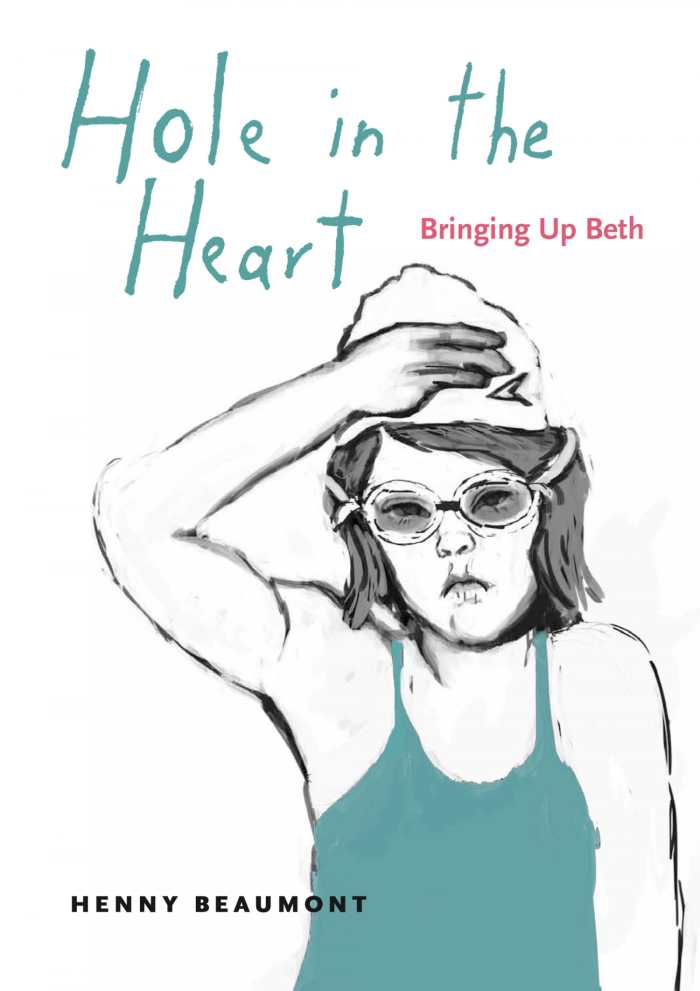
Henny Beaumont
Penn State University Press
Softcover $24.95 (288pp)
978-0-271-07740-6
Buy: Local Bookstore (Bookshop)
Hole in the Heart: Bringing Up Beth, part of Penn State’s Graphic Medicine series, is artist Henny Beaumont’s brutally honest, and ultimately uplifting, account of raising a daughter with Down syndrome.
“Hole in the heart” refers to a common heart abnormality in children with Down syndrome, one which Beth, Beaumont’s daughter, has surgery to correct. But the title also refers to the battle for Beaumont and her husband to truly understand and embrace their daughter as she is; from the beginning, they often attempt to ignore or work around Beth’s limited abilities, while experiencing a gamut of emotions: guilt and sadness, hope and frustration, and, eventually, acceptance and love.
Beaumont has an MA in fine art and printmaking, and she transitions that experience to sequential art particularly effectively. The narrative flows easily, and when Beaumont chooses to slow it down, the results are gut-wrenching, as with an imaginary “visit” from Beaumont’s 15-years-older self, as the elder woman tries to impart perspective and patience to the younger one. The facial expressions of Beaumont’s characters show everything from sympathy to embarrassment to condescension, as Beaumont and her husband struggle to make good choices for Beth regarding schools, activities, and friends.
Hole in the Heart is a deeply affecting graphic novel that will certainly light a path, if not the only path, for other parents of children with Down syndrome. But it might be even more important for those with no experience of Down syndrome, to help gain an understanding of how the genetic disorder affects not just the child, but the child’s entire family. No matter the audience, the book’s message is universal.
PETER DABBENE (August 26, 2016)
The Carousel of Desire, 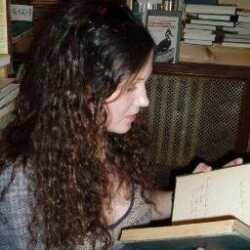
Michelle Anne Schingler
Eric-Emmanuel Schmitt. This massive, licentious novel charmed me completely. Its characters are the tiniest bit shameless—save a young girl who changes them all by sending out anonymous love notes that are variously interpreted and acted from. Desperate people find hope, lonely people find companionship, trapped people find a way out. Schmitt’s is a novel about combating inertia, and every page of it is worth engaging. —Michelle Anne Schingler
The Carousel of Desire
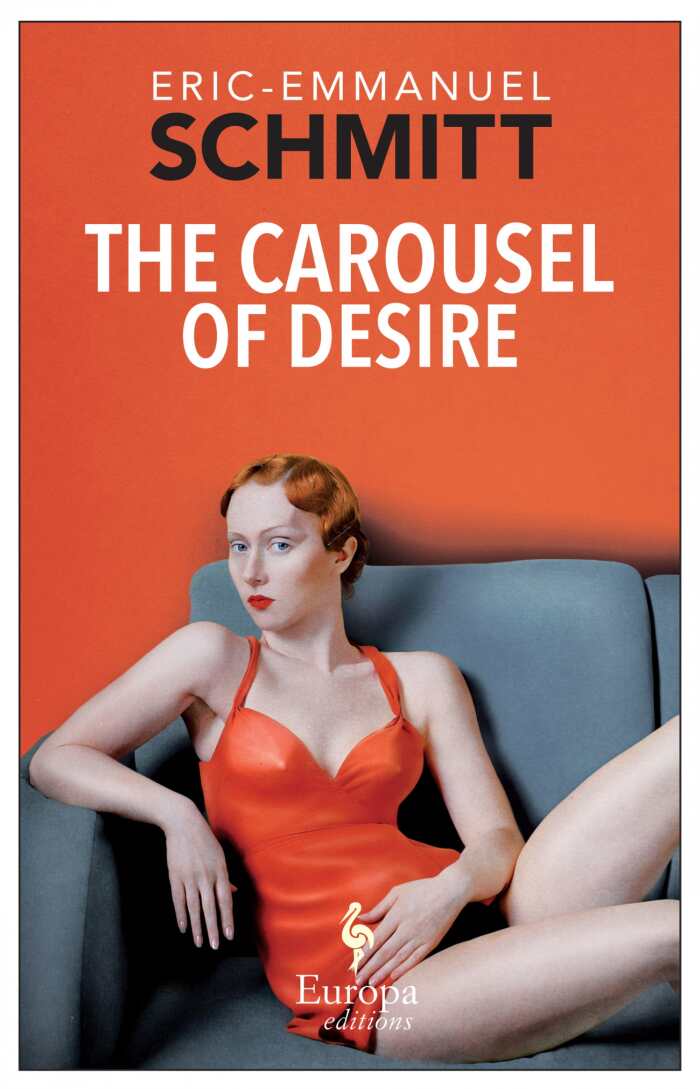
Eric-Emmanuel Schmitt
Howard Curtis, translator
Katherine Gregor, translator
Europa Editions
Softcover $21.00 (672pp)
978-1-60945-346-6
Buy: Local Bookstore (Bookshop)
The human dramas in Carousel reward the voyeur’s eye.
A Brussels neighborhood is the site of a grand experiment in human connection, in Eric-Emmanuel Schmitt’sThe Carousel of Desire, an inventively gratifying libertine comedy of errors.
The residents around the Place d’Arezzo bumble about their daily lives with varying degrees of resignation, licentiousness, and unanswerable need—that is, until a mysterious benefactor (or possible tormentor) aims to prod them into new territory by delivering each an anonymous letter: “Just a note to tell you I love you. Signed: You know who.”
At first, the recipients of this message respond in predictable ways: those who have given up on love already are annoyed or angry; those happy in their romantic situations are flattered; those inclined to guilt feel that, as well. But then the notes prompt movement: Patricia, who hates her body and loves the Adonis who cares for the courtyard, is delighted to find that he desires her back; Nathan and Tom, dancing around their affections, feel encouraged and solidified by the sentiments, and take next steps in their relationship.
But no one can be forced into happiness, as the author of these notes—who sees much, but cannot see all—soon learns. Piece by piece, couple by couple, the neighborhood rebuilds itself in unexpected new ways.
The gift of The Carousel of Desire exists in the vividness of its prose: in its hungry explorations of wantonness unfettered, or in the bemused unpacking of the neuroses of those who feed off connection, but who never see far beyond themselves. Political families delight themselves with their own cleverness; artists in love are impressed by their ability to adapt. Bodies contort to meet unexpected needs, and lips come together in unhoped-for affection. Love, sex, divorce, birth, and death: the cycles of human lives are covered in startling and sensitive ways.
Language throughout is playful and provocative, and even Schmitt’s most self-consciously shocking characters never cease to surprise. The human dramas in Carousel reward the voyeur’s eye, producing a mixture of vulnerability and salaciousness, cruelty and kindness, that is continually compelling. This monumental novel is satisfying at all turns.
MICHELLE ANNE SCHINGLER (August 3, 2016)
Six Memos from the Last Millennium, by Joseph Skibell. There are Talmudic passages over which grand debates have raged for centuries, but there are also moments within the canon that receive relatively little attention—the passages over which even rabbis shrug and admit “I don’t know.” The novelist Joseph Skibell chose to tackle such passages in Six Memos, a grand and creative theological dance, and he does so in a way that is completely enrapturing. This is textual exploration at its most fun. —Michelle Anne Schingler
Six Memos from the Last Millennium
A Novelist Reads the Talmud
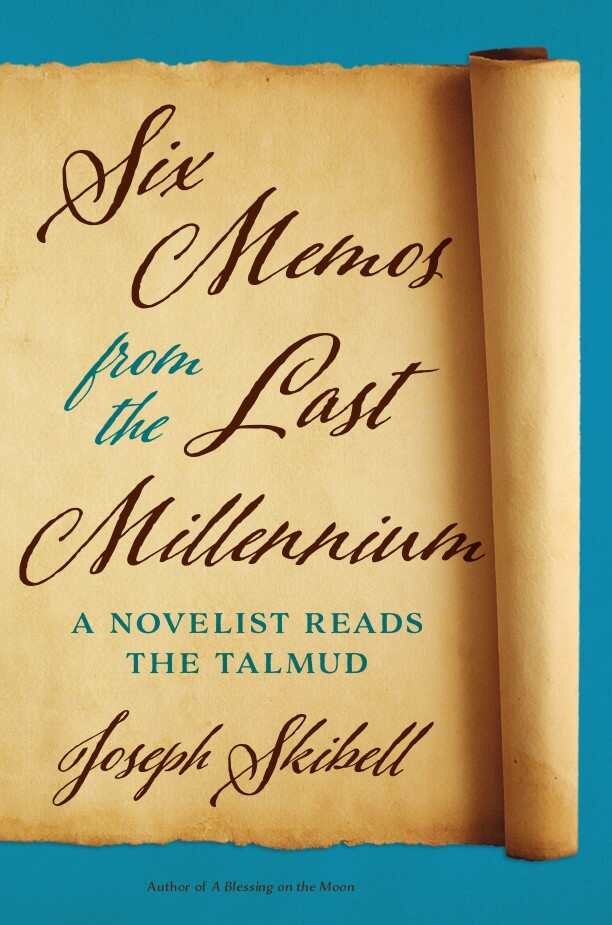
Joseph Skibell
University of Texas Press
Hardcover $24.95 (264pp)
978-1-4773-0734-2
Buy: Local Bookstore (Bookshop)
Approaching seemingly impenetrable passages of rabbinic discourse with artful inquisitiveness, Skibell brings early authorities back to life.
Joseph Skibell shifts his incisive gaze from fiction to the Talmud in Six Memos from the Last Millennium, a learned, interdisciplinary dance through Judaism’s theological legal canon.
Skibell begins the project with the frank admission that many of the passages in the Talmud are strange on their face, but he indicates that great beauty resides there, too. A rabbi looks up from the story of Ulla after being asked what’s this about?; his “I don’t know” prompts Skibell’s careful textual journeying.
Approaching seemingly impenetrable passages of rabbinic discourse with artful inquisitiveness, Skibell brings early authorities back to life. The undulations of their stories often veer toward the mythical: gazes that set the world afire; years spent hiding in the sand up to one’s neck; walls held up by sheer force of will, that bend inward as the sacred moves out. To such elements, Skibell adds reflections on the needs and foibles of even the most spiritual human beings: jealousy, fear, and resentment all factor in, as do moments of forced growth, as leading rabbis mature from reactionary to cautious beings, if bent there by the will of God.
The lessons that are drawn from such stories are poignant. Heaven and earth, one’s ancestors and descendants, one’s self and others: these are the foci of the Talmud, Skibell discerns. These dualities become the rabbis’ everythings, as they learn—often in the midst of traumatic narratives—to live betwixt and between. And because these are universal dynamics, connections are drawn between these ancient tales and the words of modern writers and artists, from George Harrison to Proust, with some Shakespeare thrown in for good measure. The holistic nature of Skibell’s project will draw even skeptics in.
The Talmud is a closed canon, and so the insights of Six Memos cannot be added to the milieu of its margins; this comes to seem a loss. At times both as enigmatic and as spiritually attuned as the text upon which it comments, Skibell’s is a gem of a theological exercise.
MICHELLE ANNE SCHINGLER (May 3, 2016)
We Love You, Charlie Freeman, by Kaitlyn Greenidge. Greenidge’s novel is a startling examination of the power–and limitations—of communication. On the surface, it’s about a family chosen to teach a chimpanzee sign language, on behalf of an institute with a dark history of dehumanizing black people; but the world that opens up to the Freeman’s eldest daughter, Charlotte, because of her family’s interactions with Charlie—and with the Institute’s past–is much more complex than their immediate tasks. This is beautiful book that resists comparisons, and that absolutely everyone should read. —Michelle Anne Schingler
We Love You, Charlie Freeman
A Novel
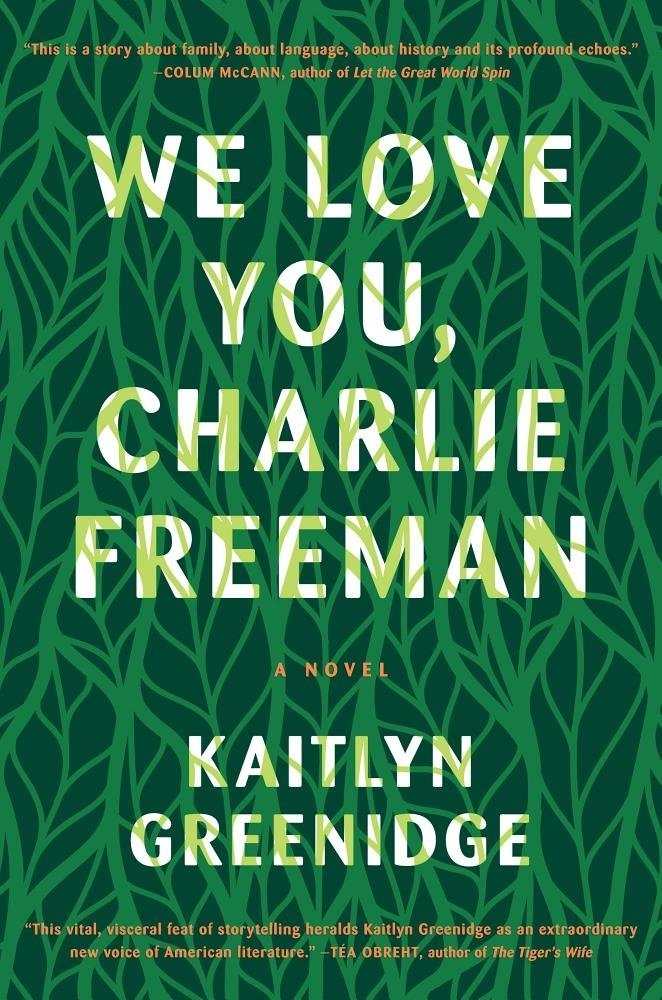
Kaitlyn Greenidge
Algonquin Books
Hardcover $25.95 (336pp)
978-1-61620-467-9
How do we communicate the ideas and hopes that mean the most to us—and at what risk? That question recurs throughout Kaitlyn Greenidge’s debut novel, We Love You, Charlie Freeman.
The novel focuses on the Freeman family, tapped to teach a chimpanzee sign language at the morally questionable Toneybee Institute. But beneath their experiment run major questions of belonging, assimilation, and interpersonal communication, all of which tie into continued racial inequality.
Charlie Freeman’s beautiful prose and surprising characters would distinguish it amongst its peers in any circumstances, but its focus on race renders it crucial, timely reading for all those who question, or who wish to discuss, the persistence of prejudice, or the insidiousness of its movements.
MICHELLE ANNE SCHINGLER (December 14, 2016)
The Third Swimmer: A Novel, 
Thomas Brennan
by Rosalind Brackenbury. The Third Swimmer is a concise novel that confers an intimate sense of place in London before WWII and after in war-torn France. This is a novel that adroitly deals with ultimate questions that may have no answers. —Thomas Brennan
The Third Swimmer
A Novel
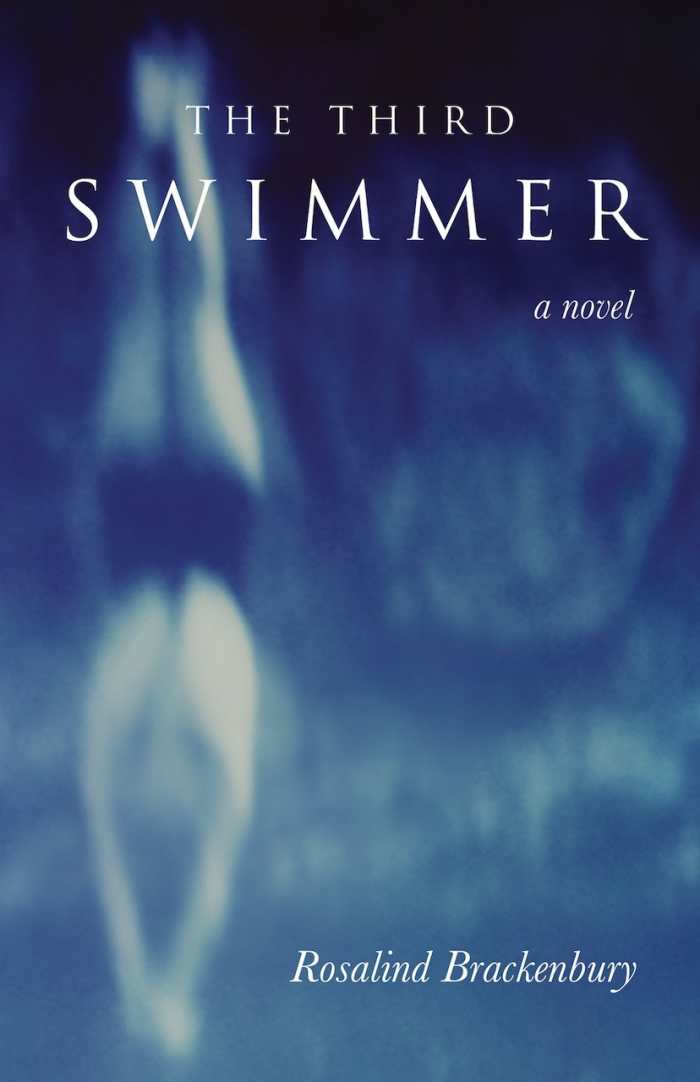
Rosalind Brackenbury
Daniel and Daniel Publishers
Softcover $14.95 (178pp)
978-1-56474-582-8
The Third Swimmer is an engaging novel and a welcome addition to the literature of understanding the destruction of war.
Rosalind Brackenbury’s The Third Swimmer is an intricate, well-crafted gem of a tale. The first part finds two Londoners, Thomas and Olivia, personally adrift just prior to the expected invasion of Britain in 1939. The narrator intimately reveals the aimlessness of these two people who have strong reasons to believe that their deaths are imminent. Thomas, surprising both himself and Olivia, proposes. Olivia, surprising herself and Thomas, accepts.
As the war approaches British shores, the narrator deftly bores in on the doubts, insecurities, and deceptions of these two lonely souls. They share fleeting moments of contentment rather than a genuine joy of an engaged couple. The prose is precise, with details conveying life in a land where the war consumes the nation as a whole and these two people in particular.
A decade later, their marriage has become a forlorn affair. An impetuous decision to visit France for a delayed honeymoon resurrects the couple’s repressed anxiety of having survived the war when others did not. In the absence of their four children, their relationship is exposed and threatened, and only an act of bravery by Thomas—and intuition on Olivia’s part to save him from his heroism—bring the couple to the brink of recovering their lost love.
Rural France comes alive on later pages: dusty, hot, and war-torn, France is as vividly rendered as the bombed-out residences of London. Olivia speaks a bit of French, and the these snippets of dialogue imbue the prose with a familiarity of place. The minor characters are vividly drawn, from Olivia’s secretive London lover to a prescient French peasant who assures Olivia that he sees her future with Thomas.
The Third Swimmer is an engaging novel and a welcome addition to the literature of understanding the destruction of war.
THOMAS H. BRENNAN (May 27, 2016)
Colonel Lágrimas, by Carlos Fonseca Suárez. So much of the writing in Carlos Fonseca Suárez ‘s Colonel Lágrimas was just gorgeous, and Megan McDowell’s translation from the original Spanish managed to keep the beautiful complexity of the language intact. —Meg Nola
Colonel Lágrimas
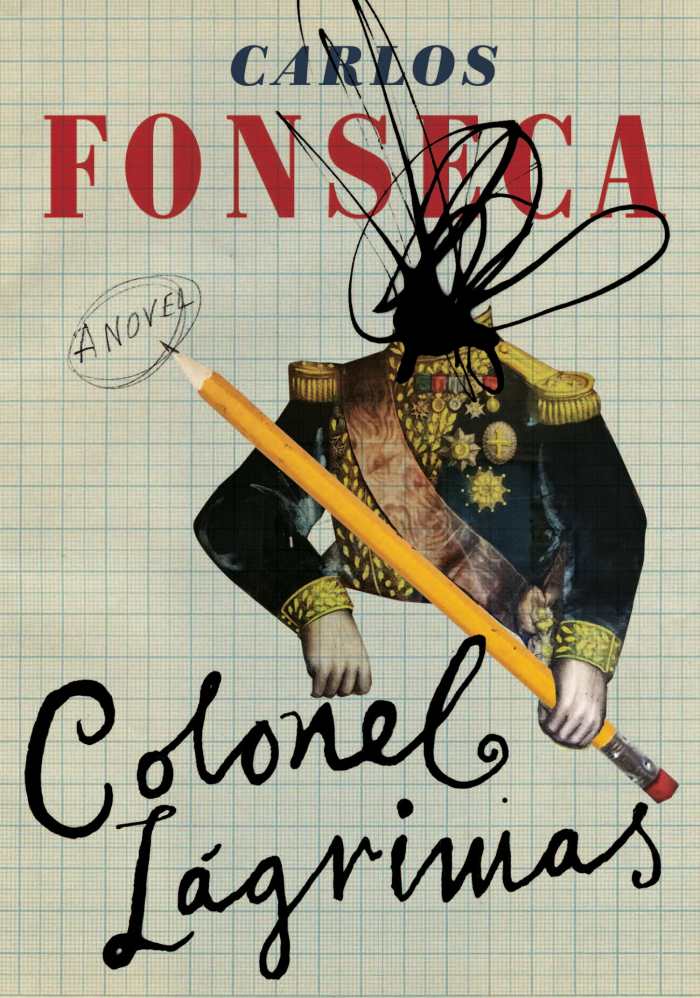
Carlos Fonseca Suárez
Megan McDowell, translator
Restless Books
Softcover $15.99 (224pp)
978-1-63206-103-4
Buy: Local Bookstore (Bookshop)
Knowledge is a form of both escape and imprisonment, in this intricate and prismatic novel.
In beautifully detached prose, Carlos Fonseca Suárez’s Colonel Lágrimas weaves the past and present together in an intricate web of memory.
Colonel Lágrimas is based loosely on the life of German-born Alexander Grothendieck, whose parents opposed fascism during the Spanish Civil War and whose father died at Auschwitz. The elegantly introduced colonel of the novel is an elderly, eccentric mathematician, living alone with his own genius “among a disarray of books and tobacco.” He has opted for a hermit’s existence among the Pyrenees’ “green and white mountains,” hoping that when death does find him, he will be at peace.
For the colonel, knowledge is a form of both escape and imprisonment. Facts compete with memories, and he strives to put both in order. He seems to have lost his ability to pursue his true mathematical work, perhaps due to a breakdown or the mental deterioration of aging. He instead obsesses over a vast, encyclopedic compilation of his knowledge—and over one equation, which may represent the coded essence of years of oblivion and guilt.
The colonel is a maddening, fascinating character, evasive with both observers and himself—if understandably, given the trauma in his past. Lágrimas reaches out to Maximiliano Cienfuegos, whom he knew in his younger days in Mexico, initiating a curious correspondence. The colonel calls Maximiliano his apostle. Maximiliano dutifully receives the colonel’s erratic mailings—postcards, equations, writings—and is bewildered by the men’s strange connection, prompted by a single game of chess years ago.
As the colonel’s final project pushes him further into madness, he turns to alcohol, but even rum cannot blot out the single equation “that was at the same time his happiness and his condemnation.” More prismatic than literal, Fonseca’s novel is ambitious yet controlled work, following in the tradition of eloquent Latin American writing with its own distinct style.
MEG NOLA (November 18, 2016)
A Single Happened Thing, by Daniel Paisner. Daniel Paisner’s A Single Happened Thing went in a different direction than I originally expected – though there’s a definite warmth and humor to the narrative, the novel was less of a feel-good baseball miracle tale and more of a quirky ghost/mortal odd couple pairing. The real tragedy of 1880s baseball star Fred “Sure Shot” Dunlap’s life is sadly compelling, and why he chooses to haunt 1990s everyman David Felb is a mystery that has serious effects on Felb’s marriage and psychological well-being. —Meg Nola
A Single Happened Thing
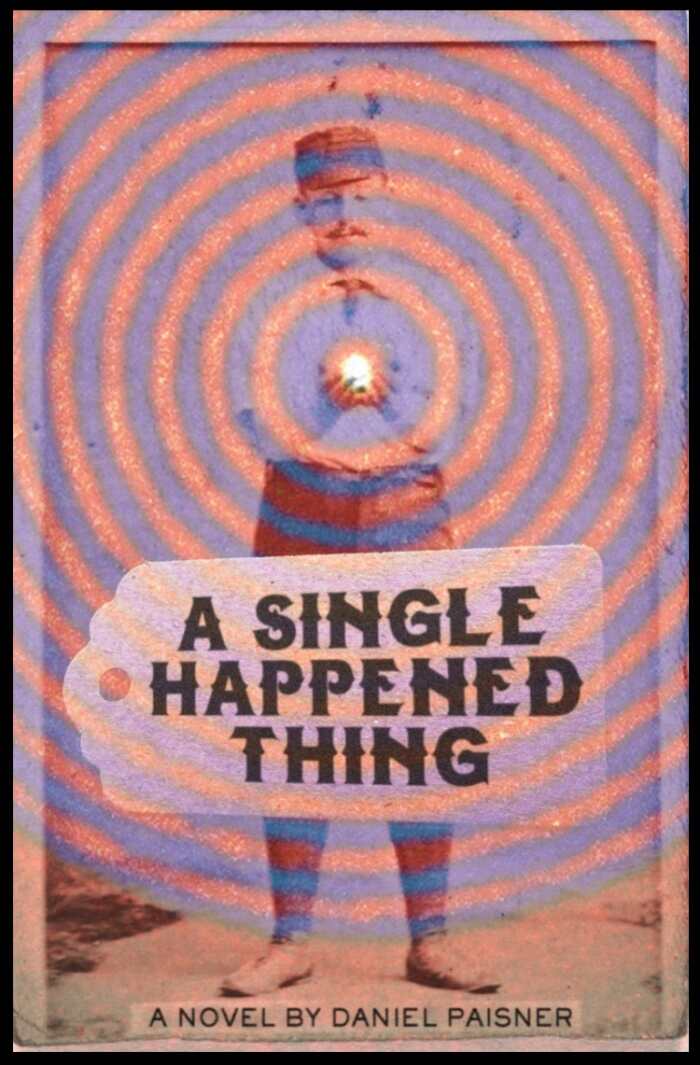
Daniel Paisner
Relegation Books
Softcover $16.00 (235pp)
978-0-9847648-3-9
Paisner deftly uses the technique of grounding otherworldly fiction in everyday reality.
Daniel Paisner’s A Single Happened Thing is an engaging novel that weaves past and present with baseball and life, in a tone of surety and warm humor. Set in the last years of the 1990s, the story presents David Felb, a self-professed everyman with few illusions about his place in the world.
A book publicist in Manhattan, Felb works to promote the accomplishments of others at a job he’s had for twenty years. Devoted to his wife and daughters, trite midlife crises involving mistresses or red sports cars are unthinkable to him. Nonetheless, while on a business trip to Philadelphia, lifelong baseball fan Felb takes a break and goes to a Phillies doubleheader. There he crosses paths with the spectral incarnation of Frederick Dunlap, a Philadelphia-born baseball phenomenon who, despite a remarkable career, died penniless and alone in 1902.
Dunlap’s presence in Felb’s life has unexpected resonance. There is his own bewilderment, particularly when Dunlap shows up for subsequent visits, and there are the aftershocks that begin to trouble his marriage. Felb’s wife, Nellie, is a highly capable nurse, but in her pragmatic need to heal, she refuses to allow the possibility of other dimensions. Despite the fascinating nature of Felb’s conversations with Dunlap and the tangible souvenir of Dunlap’s frayed calling card in Felb’s wallet, Nellie insists that her husband see a psychiatrist and start taking antianxiety medication.
Paisner deftly uses the technique of grounding otherworldly fiction in everyday reality, keeping Felb’s interactions with Dunlap subtle while creating a backdrop of late-twentieth-century details like leftover Chinese food, ESPN, and dial-up Internet connections. Felb’s spirited teenage daughter, Iona, also a baseball fan and softball player and “always up for a catch,” becomes a willing accomplice in the Dunlap mystery, accompanying her father to the Cooperstown Hall of Fame and an old-school league game in Central Park. These elements combine to create the intriguing effect, as Paisner writes, of lives entwined “like the dovetailing waxed red threads stitched into the baseball … tossed to me some hours earlier.”
MEG NOLA (May 27, 2016)
Howard Lovy
